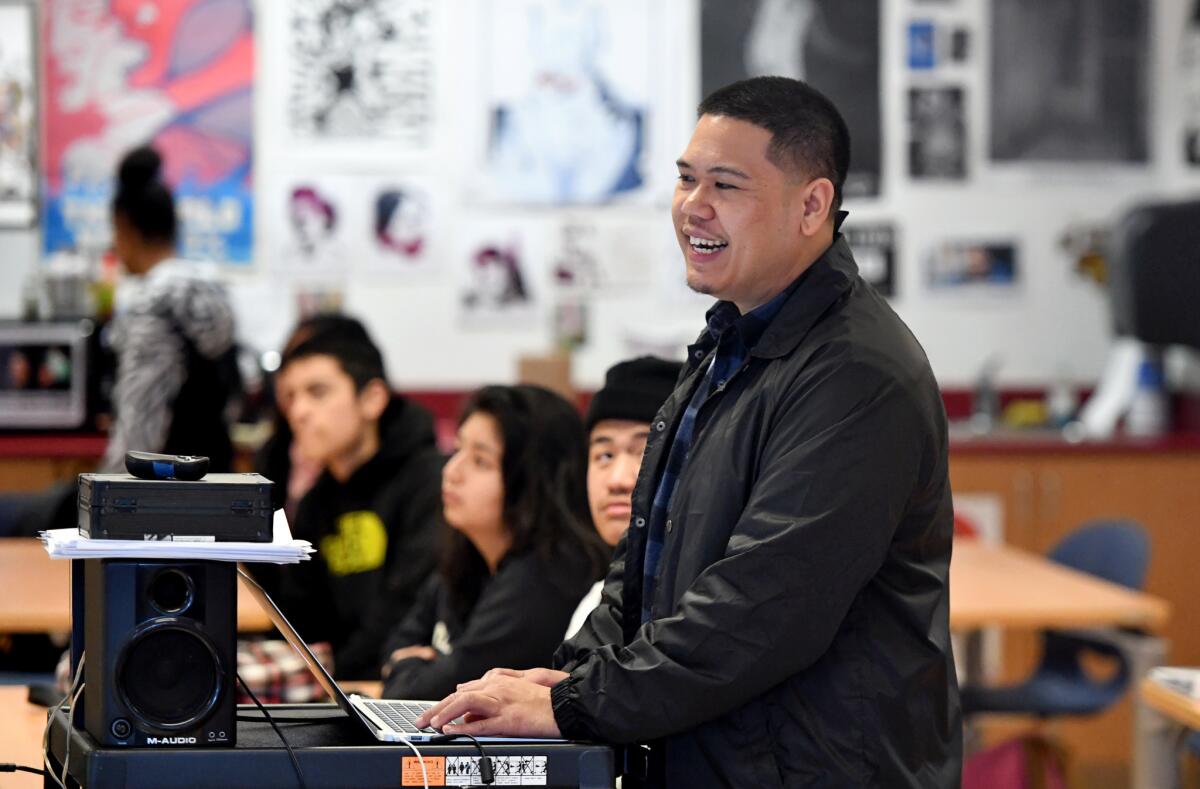A new state ethnic studies proposal hits closer to the mark

- Share via
Gone is the cisheteropatriarchy and the hxrstory. A year after producing a bloated, jargon-laden model curriculum for a high school ethnic studies course, a California committee of teachers and academics has put forth a more coherent and flexible document that drops the previous overload of topics, ditches the assertion that capitalism is on par with white supremacy and racism as a form of “power and oppression” and provides less politically slanted suggestions for lessons.
The new draft, which was prompted by the stiff blowback the initial proposal drew from state officials and some educators, will get its first review from the state Board of Education Thursday. The board’s goal is to have a model curriculum adopted by March so that state high schools could use it in the next school year.
In the year since the first draft was released, we’ve witnessed the death of George Floyd under a police officer’s knee and endured a pandemic that has exposed inherent — and lethal — racial and ethnic inequities in the healthcare and education systems. There has been a new awakening to direct and systemic racism in our society, which serves as a jolting reminder of how badly high schools need a strong ethnic studies course.
So the most important improvement in the new draft is particularly fitting: It hews more closely to a more traditional definition of “ethnic studies,” which generally refers to the struggles of Black, Latino, Asian and Native Americans against various forms of racism. The original version tried to cover such a broad spectrum of intolerance that it over-emphasized some groups at the expense of others and skimmed the surface of all of them.
The earlier version incurred the harshest criticism for various perceived slights against Jews, including recommending a song with an anti-Semitic trope and singling out one foreign country, Israel, for criticism. The Legislative Jewish Caucus sent a sharp letter of protest; among those signing was Assemblyman Jose Medina (D-Riverside), author of a bill that would have required California high schools students to take an ethnic studies course in order to graduate. Medina put the bill on hold until, as he put it, “we get the curriculum right.”
“Getting it right” required changes on several fronts. The original curriculum barely gave credence to the idea that reasonable people can hold differing opinions on a whole range of topics.
Of course, an ethnic studies curriculum can’t be totally objective. No one should want it to be. The whole point is to foster greater understanding and push back against intolerance. The most basic theme of such a course is that racism is a flat-out evil. That, at least, should be inarguable in our society.
But last year’s curriculum seemed designed more to indoctrinate than to increase knowledge and generate thoughtfulness. Its use of jargon was off-putting and sometimes divisive.
The new draft tones down the rhetoric significantly and brings more generally agreed-upon values into its sample lesson plans.
Instead of delving into the issues affecting a multitude of groups, the new curriculum mentions various groups in larger contexts — such as migration to the United States — and leaves room for schools to design their curriculum around their student populations. It’s a good plan, up to a point. There is no way to provide a worthwhile education on each of the many groups, including Muslims, Jews, Hindus, Armenians, women and LGBTQ people, that have suffered intolerance or have had to fight over and over again for basic rights.
Individual school districts are under no obligation to follow the model curriculum in any case; it’s more a set of suggestions, lesson plans and resources that schools can use or not. Themed lessons allow additional groups to be added without shifting the focus away from the four main ones. But schools still should emphasize the four groups that have been the chief targets of racism in this country.
Some sloppily worded or biased statements remain in the new draft, such as “Similarly, interpersonal sexism is what men do to women …” as though this is what all men do to all women (and no women do to men). But most of these should involve relatively minor fixes, not an overhaul.
It’s particularly good to see these studies tied to rigorous suggested coursework involving deep research, writing, critical thinking and comparative literature. The exercises that would have divided students have been swapped in favor of work that seeks to have them understand themselves and each other better and find areas of commonality.
More to Read
A cure for the common opinion
Get thought-provoking perspectives with our weekly newsletter.
You may occasionally receive promotional content from the Los Angeles Times.






